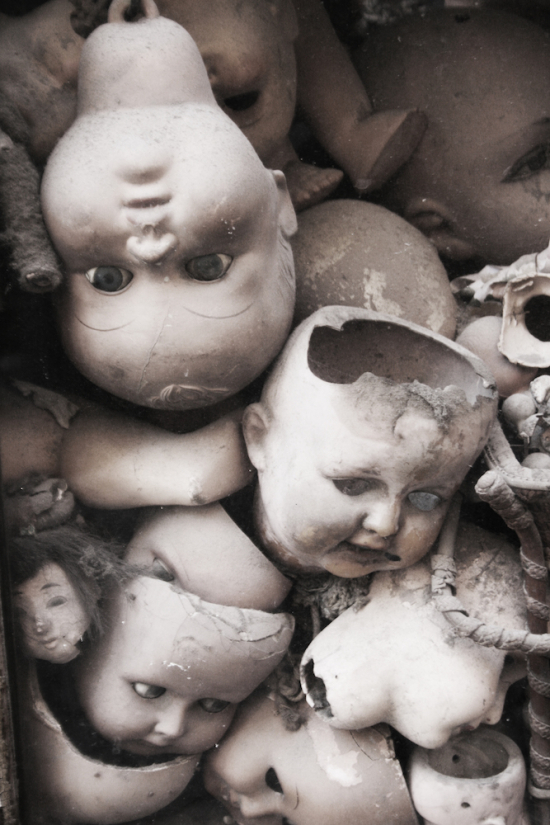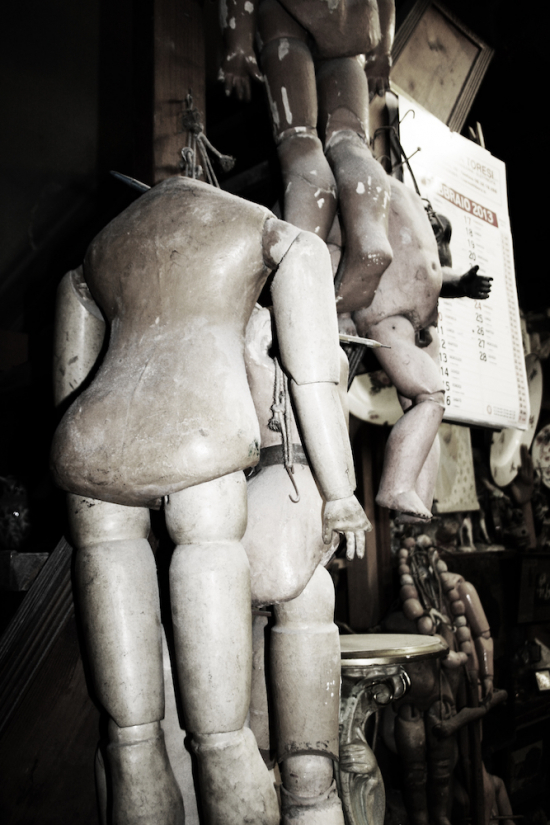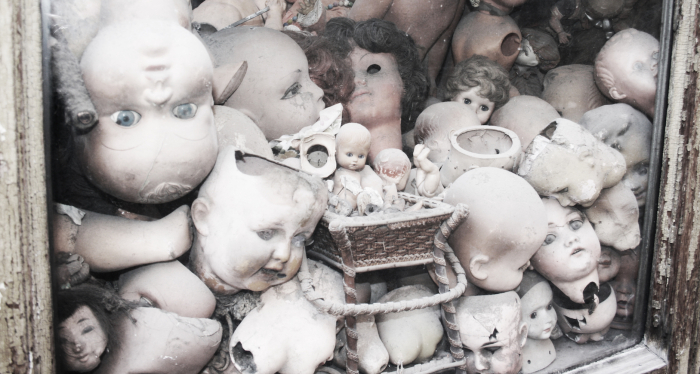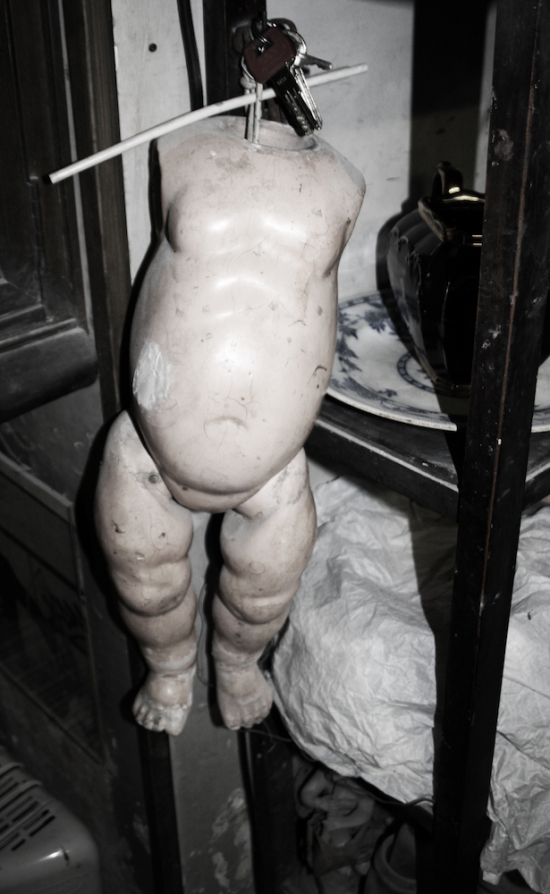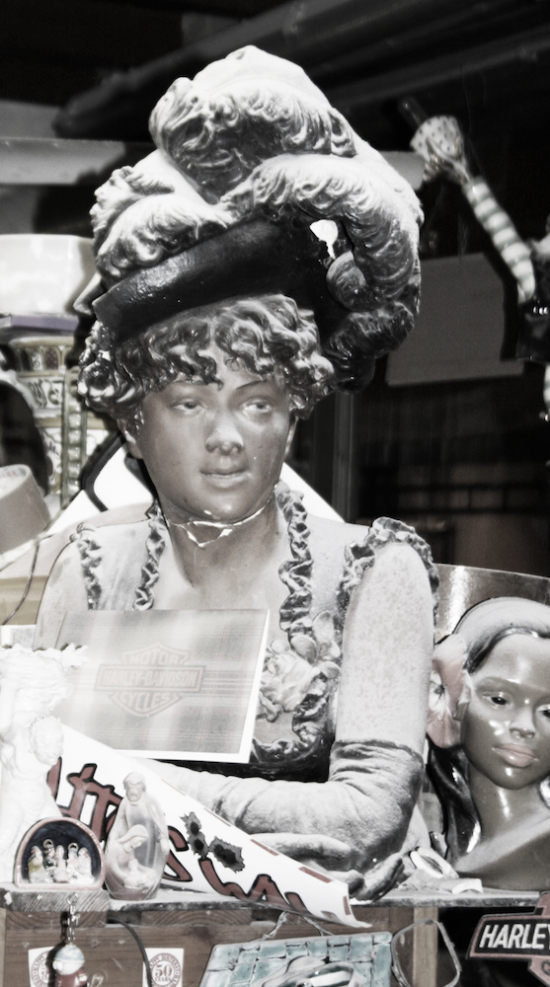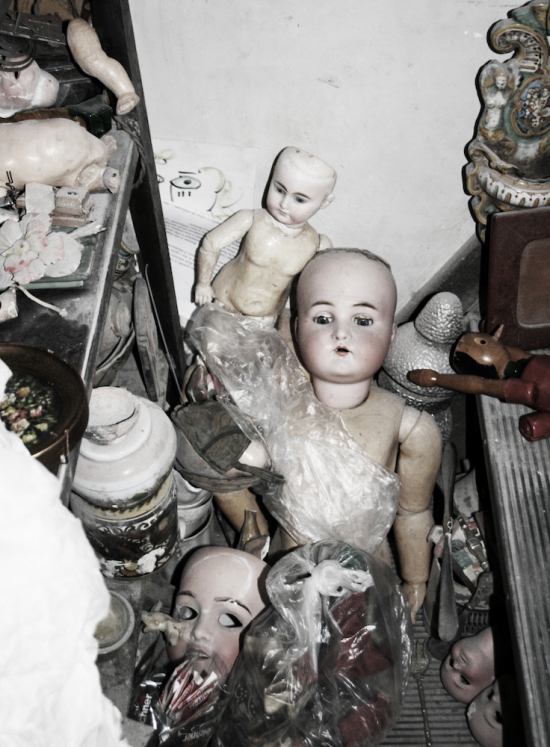RESTAURI ARTISTICI SQUATRITI
text and photos by Lina Vergara Huilcamán
In the centre of Rome, in a side street of Via del Corso, there is an old shop-window full of dolls or dusty pieces of dolls. Motionless, they stare at you with their beautiful blue eyes. I get curious all at once. As I get in, I am welcomed by a smile – a weird thing nowadays, when people are insensitive or always in a bad mood – and I hear these words, still accompanied by a smile: “We don’t sell anything, we only repair things.” I feel like smiling too.
A serene and polite Lady is sitting at a table and makes little adjustments with a small brush to a round bowl, made of ceramics or porcelain – I am not well up on such things. Between her head and the bowl there’s an enormous magnifying lens. In front of her there is a man – later on I will discover he is her son – wearing an apron and a wool cap. I ask for permission to get in. I introduce myself saying I wish to write an article for the magazine, I pass them the two copies I have brought and they immediately start to leaf through them. “Please come in” they say “we were ready to go home.”
While they leaf through the magazine, I take photographs around and ask questions. “We repair dolls, items made of porcelain and materials akin: wood, ceramics, majolica, ivory, terracotta” and then: “When you can do something, you can do anything.”
Curious people look through the windows that expose glimpses of the inside. It is dark outside, almost closing time. Inside, a small electric heater heats up the room. “People are used to get in and buy things. You always need two pairs of eyes. These Americans are not used to things that are older than their mother. They are used to think they can buy anything.”
It’s true – I think – as soon as we see something beautiful or strange, we want to buy it. And when it isn’t on sale, like fishes in an aquarium or animals in a zoo or even a beautiful sunset, we take thousands of pictures to bring something home.
Even if it’s only a photograph.
Squatriti started in 1953 “with my grandmother”, says Federico Squatriti. “I was born in here, lived upstairs and went to school nearby.” For Federico it was natural to undertake this activity. He learnt his job as he grew up in the shop and watched his family at work. A spontaneous, simple apprenticeship. As simple as things are in life. Or, at least, as they were. Then I ask about the window, so peculiar and famous, the protagonist of so many Internet pages, where the shop is often called the dolls’ hospital, because here they do their utmost to repair them.
“The window was born because there are items that can’t be repaired and the only alternative is the bin. Nobody wants to bring a broken object home. – What shall we do? – we asked ourselves the first time we couldn’t repair a doll. We put it there. In this way dolls come to a new life, a different one, but still a new life… ” And there they are, in the shop-window, year after year, with layers of dust that reveal the passing of time, staring at passer-byes. They tell me a few stories. The one of a customer that, as he walked by the shop-window, showed to his daughter the doll he had left there ten years before. Or the story of a very polite lady that brought in her doll to have it repaired and every day used to pay her a visit in order to see how she was. The Lady intent on painting the bowl is Federico’s mother, Gelsy Caporali. I ask whether I can take a photograph of her. She agrees and tells me: “When I was a child, we had an ancient pier-mirror, which we still have.” Her son asks which mirror she is talking about and they exchange a series of questions and answers to solve the riddle. Then the Lady goes on: “It was an ancient one and the reflection was not crystal clear. And in that pier-mirror I was beautiful! The only mirror where I ever saw myself so beautiful.” And she smiles, sweetly, as she poses for the picture.
Squatriti is a piece of Rome’s history, a family business that will end with Federico. His sister has some children. But they haven’t learnt the craft. The rent is expensive. Sooner or later, the shop will disappear to be replaced by another shop. What a pity. Walking through towns is getting more and more boring. You find the same shop-windows in Rome as in Singapore. But, if you have a doll or another item made of porcelain, ceramics or the like, that you care for and it is broken or needs an adjustment, now you know where you can go and you know that you will be welcomed with a smile.
RESTAURI ARTISTICI SQUATRITI
Via di Ripetta 29, Roma
